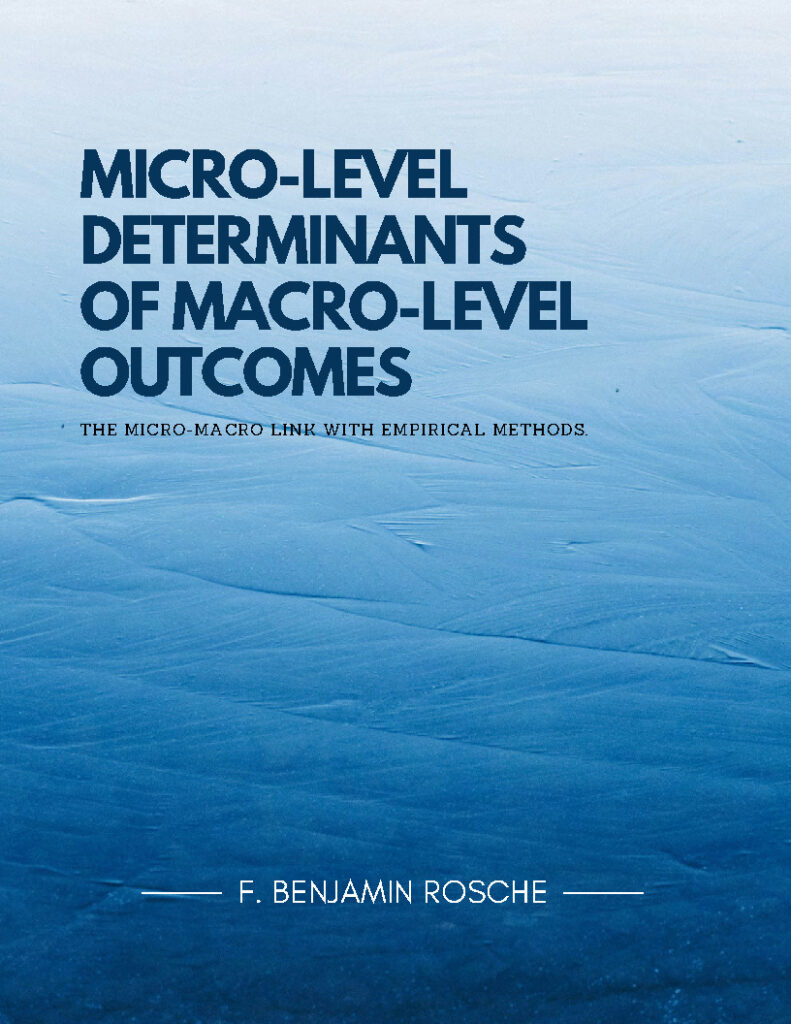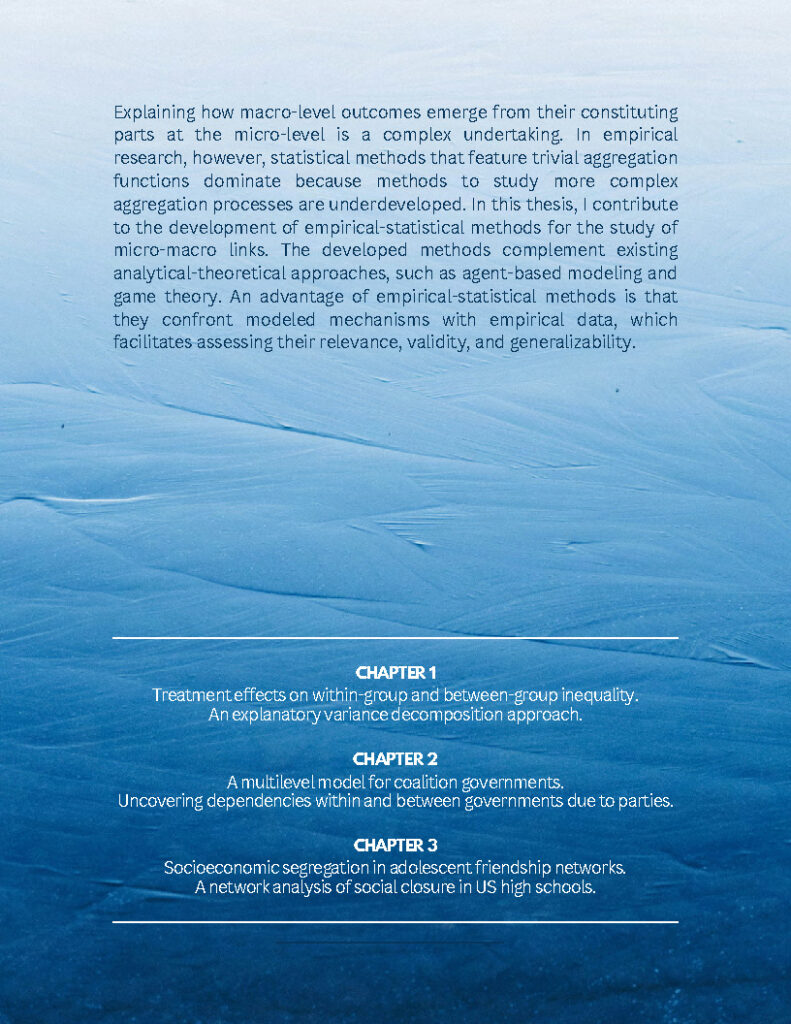Explaining how macro-level outcomes emerge from their constituting parts at the micro-level is a complex undertaking. In empirical research, however, statistical methods that feature trivial aggregation functions dominate because methods to study more complex aggregation processes remain underdeveloped. In this thesis, I contribute to the development of empirical-statistical methods for the study of micro-macro links.


In Chapter 1, I develop a method to analyze the distributional consequences of heterogeneous treatment effects in a population that can be separated into subgroups. The developed approach is based on the descriptive variance decomposition (Western and Bloome 2009). I extend this approach to an explanatory framework by modeling a treatment effect on the mean and variance of each group and then determining how these treatment effects affect the variance within groups, between groups, and overall. I demonstrate the utility of the approach by analyzing the changing effect of motherhood on women’s earnings and its consequences for women’s earnings inequality between 1980 and 2020. The decomposition of this effect reveals that motherhood increases inequality between economic strata but reduces inequality within them. As the within-group effect is larger than the between-group effect, the results show that the changes in the motherhood effect since 1980 have overall reduced earnings inequality among women. This fact is obscured when only mean differences are examined.
In Chapter 2, I develop a Bayesian multilevel model that conceptually reverses the conventional multilevel model setup to model the effect of lower-lever units on an outcome at a higher level. The model allows researchers to derive aggregation functions empirically if the specific functional form is unknown. I accomplish this by including a weighted sum in the linear predictor so that the aggregation weights of lower-level units in their effect on an outcome at a higher level can be modeled as a function of observed explanatory variables. I demonstrate the model’s utility with an empirical application to the survival of coalition governments as predicted by parties’ financial dependency on their members. The results show that the more parties’ financial resources comprise contributions from their members, the higher the termination hazard of governments including those parties. Analyzing the aggregation function, I find that parties’ weight in the effect depends on their relative seat share in parliament. Therefore, when aggregating the effect of parties’ financial dependency on government survival, parties should be weighted by their relative seat share rather than evenly averaged.
In Chapter 3, I use exponential random graph modeling and empirically calibrated simulation to examine the determinants of network structure characteristics, such as network cohesion, centralization, clustering, and composition. The idea is to generate synthetic networks from empirically calibrated exponential random graph models in which the modeled tie-formation mechanisms are sequentially activated to determine how they shape structural characteristics at the network level. I employ this approach to examine the degree, pattern, and determinants of socioeconomic segregation and its relationship to racial segregation in friendship networks in high school. The results show that friendship networks are overall less socioeconomically segregated than they are racially segregated. However, the exclusion of low-SES students from high-SES cliques is pronounced and, unlike racial segregation, unilateral rather than mutual: many friendship ties from low-SES students to high-SES peers are unreciprocated. The decomposition of determinants indicates that about half of the socioeconomic segregation in friendship networks can be attributed to differences in socioeconomic composition between schools. The other half is attributable to students’ friendship choices within schools and driven by stratified courses (about 13 percent) as well as racial and socioeconomic preferences (about 37 percent). In contrast, relational mechanisms like triadic closure – long assumed to amplify network segregation – have only minor effects on socioeconomic segregation. These results highlight that SES-integrated friendship networks in educational settings are difficult to achieve without also addressing racial segregation.